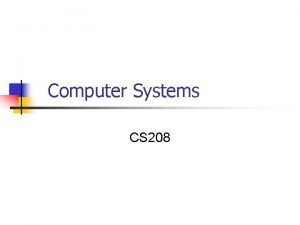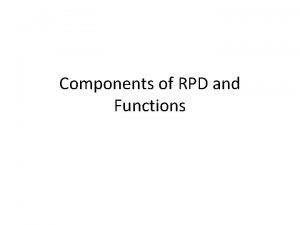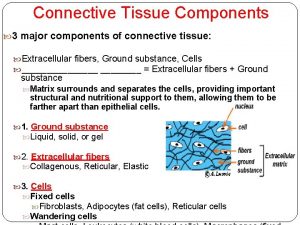Experimental Design 3 major components of experimental design













- Slides: 13

Experimental Design • 3 major components of experimental design. – Control—Block sizes. – Randomization – Replication

Control • What are we trying to control? – Lurking (extraneous) variables. • Example: To test which tires work or wear best on a car, what things to we have to control? – Tire pressure, weight of car, speed of car, road conditions…the list is endless.

Control--continued • Example 2: New medicine to help with headaches. They want to compare it with the old. – Extraneous (lurking) variables? • Gender, body size, age of participant to name a few. • Methods of control – Direct control---in car example have the exact same car for each type of tire and drive the same speed, with the same road, etc. Tough to do!

Control--continued • Methods of control. 500 subjects – Blocking: You block to control a known extraneous variable. • Example: Headache medicine—gender could be a factor. We will separate men and women into 2 blocks – Then half are given new medicine and half are given the old medicine to compare results. Men Randomly assign half To new medicine Women Randomly Assign half to old medicine Randomly Half to new medicine Randomly Half to old medicine

Control--continued • Same problem but medicine is for prostate cancer. • Direct control is used in that only men 50 -60 are studied. • Blocking is used for more control because they believe that these medicines work differently with various races. • Let’s say there are three medicines being tested (A, B, C) they are randomly assigned after the blocks. • NOTE: BLOCKS ARE NOT RANDOM> YOU CONTROL.

Men age 50 -60 in study Caucasians A B Blacks C A B Asians C A B Hispanics C A B C

Control—Blocks—matched pair • Blocks that are size two are called “matched pair. ” – Twins are the best example of a matched pair. – If two people have the same blood pressure. – Sometimes the matched pair is the same person.

Three major designs • Completely randomized design (1 group) • Block design • Matched pair—(a form of a block. ) The reality is Blocking is used almost every time. Either you have 1 big block, blocks of your choosing, or blocks of size 2 called matched pairs.

Randomization • Concept is treatment groups are randomly assigned. • Randomization, or theory behind it, is to eliminate bias. • There are many, unlimited ways to randomize.

Other ways to randomize • • Dice Names in a hat Random numbers. Count 1 -3 and put in groups. • Flip coin.

Replication • There are two meanings of replication. – The First is that there an adequate number of samples in your study. – The next is that similar studies looking for the same relationship done by different parties yield the same result consistently.

Notes • Double blind – The subjects AND the evaluators both do not know the treatments given. – WHY? – Who must know the treatments? • Beware of observational studies that are passed on as experiments—see notes.

Things to know for AP test • There are three main ways to gather info: – Survey – Observational study – experiment • Observational study vs. experiment—the difference – Observational study does not impose a treatment, so cause and effect are difficult to determine. – Observational studies are often used for studies that are immoral or expensive to conduct. • • • Example: effects of smoking Example: effects of living by electrical wires for pregnant women. Stratified vs. Blocking – Stratified is the term for a survey when you are trying to get an equal number of people or a percentage number of people in your survey guaranteed. – Blocking is to control a known extraneous variable in an experiment.
 Non experimental design vs experimental
Non experimental design vs experimental Experimental vs non experimental
Experimental vs non experimental Descriptive studies
Descriptive studies Experimental vs non experimental research
Experimental vs non experimental research Nonexperimental study
Nonexperimental study Structural components of english spelling system
Structural components of english spelling system Mis bidgoli
Mis bidgoli Hardware information system
Hardware information system Major components of computer
Major components of computer Three major components of computer system
Three major components of computer system Who should provide performance information
Who should provide performance information Major components of computer system
Major components of computer system What is social casework?
What is social casework? What are the 4 major components of soil
What are the 4 major components of soil

























